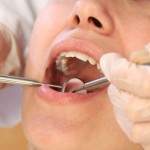
Identifying individuals at high risk of dental caries is necessary to target preventive interventions and to optimize resource allocation both at an individual and population level. Caries risk assessment is commonly based on previous caries experience and may be supplemented by radiographs and microbiological tests. A number of multifactorial caries risk assessment models have also been developed although there is limited evidence to support their accuracy (Dental Elf- 8th Oct 2012).
The aim of this review was to analyse the diagnostic accuracy of different methods used to identify individuals with increased risk of dental coronal caries.
Methods
Searches were conducted in the PubMed, Web of Science and Cochrane library databases with screening of reference lists of identified papers. Two reviewers independently selected studies with quality assessment being undertaken by three reviewers using the QUADAS-2 tool.
Pooled estimates were calculated for results of an index test wherever three or more studies showed similar characteristics concerning age group, thresholds, and reference standard. The quality of evidence based on results of three or more studies was rated in four grades (high, moderate, low, very low) according to GRADE.
Results
- 18 studies from 10 countries were included.
- No study presented low risk of bias in all domains.
- Index tests (methods) assessed included; previous caries experience; Mutans streptococci sampled from saliva or plaque; lactobacilli sampled from saliva; buffer; capacity; salivary flow rate; oral hygiene; dietary habits, and socio-demographic variables.
- The reference standard was phrased as caries increment, caries incidence, caries development, caries experience or new cavities.
- Three or more studies were found only for previous caries experience and salivary mutans streptococci and quality of evidence for these methods was low.
- Predicting caries in primary teeth at follow-up for children aged 2–2.5 at baseline pooled sensitivity was low (0.30) and pooled specificity high (0.97). Pooled positive Likelihood ratio (LR+) = 26.9 (95% CI; 10.3–63.1) and pooled negative likelihood ratio (LR-) = 0.71 (95%CI; 0.43–0.73).
- Predicting caries in permanent teeth based on previous caries experience in primary teeth (children aged 3.5–7) yielded a pooled sensitivity (0.91) but low pooled specificity (0.29); Pooled LR+ was 1.33 (95%CI; 1.17–1.75) at a LR of 0.31 (95%CI;0. 14–0.45) .
- Tests using salivary mutans streptococci resulted in low sensitivity and high specificity. For microbial sampling the highest pooled LR+ =3.98 (95%CI; 3.41 8.11) was achieved with threshold ≥105 CFU/ml in children aged 2–7 at baseline with a LR- 0.78 (95%CI; 0.46–0.80).
- Quality of evidence evaluated according to GRADE was low.
Conclusions
The authors concluded:
Our review reveals an urgent need to improve study design, test technology, and particularly reporting of studies on caries risk assessment. Inadequate reporting can lead to misleading findings with consequences for patient care. There was significant heterogeneity between the results of included studies caused by clinical and methodological issues. Evidence on the validity of analysed methods is limited.
The results on diagnostic accuracy are insufficiently robust to determine the comparative accuracy of methods using microbiota vs. that of previous caries experience, though some results suggest comparable estimates expressed as likelihood ratios. Whether previous caries experience is a better predictor than tests using salivary mutans streptococci remains uncertain, particularly for pre-school children. The low LR of both methods highlights a need to develop methods with improved performance and/or a novel approach with new candidate biomarkers.
Comments
This well conducted review has set out to assess the available methods of caries risk assessment. Three large databases have been searched although the authors highlight the challenge of identifying diagnostic test studies and indicate that it is possible that some studies may have eluded their search strategy.
While a wide range of potential caries risk factors have been identified in other studies how useful these are to predict caries risk is uncertain because of the limited quality of the available evidence. The conclusions of this review clearly highlight that fact that there an urgent need for caries risk assessments studies to be designed and reported according to the latest diagnostic study guidelines (STARD 2015).
Links
Primary paper
Senneby A, Mejàre I, Sahlin NE, Svensäter G, Rohlin M. Diagnostic accuracy of different caries risk assessment methods. A systematic review. J Dent. 2015 Oct 19. pii: S0300-5712(15)30058-0. doi: 10.1016/j.jdent.2015.10.011. [Epub ahead of print] Review. PubMed PMID: 26493112.
Other references
STARD 2015: An Updated List of Essential Items for Reporting Diagnostic Accuracy Studies
Dental Elf – 8th Oct 2012 – Limited evidence for caries risk assessment systems
Dental Elf – 25th Aug 2015 – Caries risk factors identified in life course approach studies
Dental Elf – 9th June 2015 – Caries detection: visual detection has good accuracy
Dental Elf – 10th Dec 2012 – Risk factors for early childhood caries

Limited evidence for current caries risk assessment methods https://t.co/ugVqGcDgEV
Caries risk assessment – limited evidence to support current methods https://t.co/ugVqGcDgEV
Are salivary mutans streptococci tests a predictor of caries? https://t.co/ugVqGcDgEV
Low quality evidence for current caries risk assessment methods
https://t.co/ugVqGcDgEV
Is previous caries experience a good predictor of future caries? https://t.co/ugVqGcDgEV
Don’t miss – Caries risk assessment – limited evidence to support current methods https://t.co/ugVqGcDgEV
It’s possible to predict whether or not an individual is susceptible to getting cavities. However, no matter what the data says, good oral hygiene can help considerably! It’s also important to stay away from foods that can cause tooth decay.
While you may have a belief that you can predict caries. The evidence available from a number of reviews has identified a large number of potential caries risk factors. and compared various systems and models. But none have consistently shown that they can predict caries.
See previous blogs
http://www.nationalelfservice.net/?p=2343
http://www.nationalelfservice.net/?p=4768
[…] Caries risk assessment – limited evidence to support current methods […]